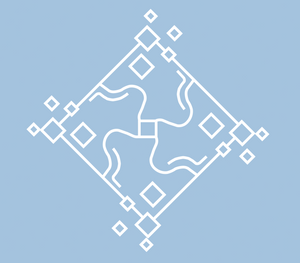Exponential visitor’s growth which has been experienced in the Grand Mosque Al-Haram (Makkah, KSA), demands new solutions for public safety, emergency response, crowd and space management.
In the last decade, an exponential growth of visitors have been occurring in historical and touristic places around the world because of the decrease in cost of commercial flights.
The Grand Mosque Al-Haram has been impacted by the global trend of exponential increase of visitors in the recent years related to the easiness of travel, because of new low-cost company’s offers of cheap flights and better promotional packages with established culture for Umrah and Hajj in countries such as Egypt, Morocco, Indonesia.
In the Ramadan 2025 season, a breaking point for many self-organised space and crowd management processes has been reached where those mechanisms no longer serve their purpose, impacting heavily on the overall personal pilgrim’s experience and the general public security.
When overcrowded
“Human crashing” is a newborn term for the Tawaf experience, a main reason for disappointment and regret.
Self-organisation of the mobility flows out-/in-side the Grand Mosque Al-Haram has been recently broken because of overcrowding, creating a new phenomenon called “human crashing”. This phenomenon is heavily experienced when performing Tawaf in the Mataf (at the ground floor), especially close to the Kabbah.
A danger for the life of children and elderly have been observed due to this new phenomenon.
Disrespect for Islamic principles and simple social respects of minimum personal space are between the main reasons for personal regret and disappointment for many of the pilgrims. For many, their worshiping experience is rendered worthless and they leave the space with a heavy feeling of loss of opportunity.
Another noticeable effect of the overcrowding of all spaces has been observed to be the need to secure one’s personal rights for worshiping in the tangible meaning of securing space and time. It pressures many people to fasten their steps to reach the place for prayer; to become impatient when performing basic needs and wudu; to disrespect rules and personal space, intentionally crashing on others; to shout and sometimes get into physical confrontations.
It was identified that after spending a certain time under this pressure, many people translate the new experienced disrespectful way of resolving their personal needs to their full stay, becoming a burden to other worshipers. Additionally, an important tendency to force their new-founded behaviour to become a norm has been detected.
It has been observed that when disrespect to rules and organisational process is generalised, many visitors stop any worshiping activities becoming busy in social activities, increasing the general noise in the space and burdening the worshiping of others. This dynamic creates new reasons for disappointment and ruined worshipping experiences.
More people, less patience
A new pressure to secure one’s opportunity to worship
A wide spread of lack of patience has been observed creating many situations of confrontation between visitors and providers of service (e.g. cleaning workers, water assistants, guards).
Again, these situations increase the general unrest in a space creating noise and disturbance of experience.
Finally, securing a space for prayer reshape the space itself, as many visitors use their personal items to reserve a prayer spot, increasing visual contamination, disturbing cleaning services and decreasing overall space for prayer.
New issues arise from this behaviour related to general hygiene and personal mobility.
How technology may help
The ADVANCED KNOWLEDGE's selection of technologies focuses on minimizing human interaction between management/ service’s providers and visitors, while building trust, tranquility and minimising the distractions from worshiping. We suggest solutions related to
- "Know-Your-Customer" and entry/exit control technologies that complements human service,
- Local private WiFi network,
- Lightening technologies for delimiting space and assign space’s purpose,
- Robotic technology for cleaning the space,
- Semi- and full automation of cleaning service for public restrooms,
- Digital lockers in bathrooms and other specified places .
A well-designed integration between these technologies will provide mobility and expereince data which will improve crowd- and space- management enhancing public security, general public hydine and wellbeing. The expected impact is 60% improvement in emergency response, 83% increase in visitor's satisfaction, 54% more space for worshiping.
